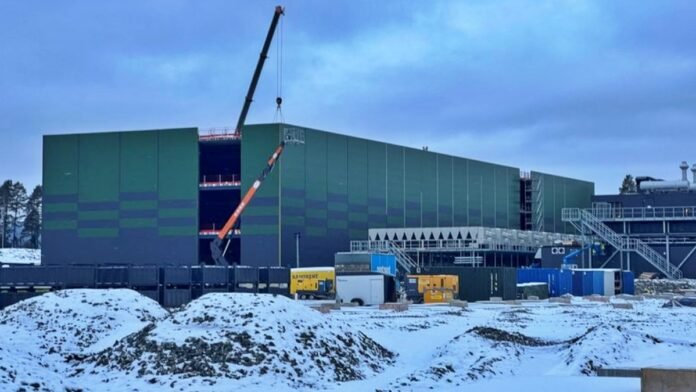
Key Points:
- Europe will see a record-breaking 937MW of new data center capacity in 2025, a 43% increase from 2024, according to CBRE.
- Major hubs like Frankfurt, London, Amsterdam, Paris, and Dublin (FLAPD markets) will account for 57% of the new capacity.
- Secondary markets such as Milan and Madrid are experiencing rapid growth, with five secondary markets expected to see double-digit supply increases.
- The expansion is fueled by advancements in artificial intelligence (AI), cloud computing, government incentives, and hyperscaler ambitions.
- Challenges like power constraints and land availability persist but are driving innovation and diversification into smaller markets.
Europe is set to witness an unprecedented surge in data center capacity in 2025, with a projected addition of 937 megawatts (MW), marking a 43% increase from the 655MW delivered in 2024. This record-breaking expansion is driven by the growing demand for AI-powered technologies and cloud computing infrastructure, according to a report by CBRE Group.
The boom underscores Europe’s pivotal role in the global digital transformation as businesses increasingly rely on data-intensive technologies to optimize operations. This surge is not only reshaping major data center hubs but also accelerating development in secondary markets across the continent.
A Historic Expansion
The 937MW of new capacity expected in 2025 represents the largest year-on-year increase ever recorded for Europe’s data center market. This growth follows sustained demand that has consistently outstripped supply over the past three years. In Q4 of 2024 alone, colocation take-up reached a record-breaking 341MW, while only 297MW of new supply was added.
Kevin Restivo, Head of European Data Center Research at CBRE, emphasized the resilience of the sector: “The data center construction boom will continue unabated. Available power, appropriate land, government incentives, and hyperscaler ambitions are key factors driving this rapid growth.”
Primary Markets Lead the Way
More than half (57%) of the new capacity will be concentrated in Europe’s leading FLAPD markets Frankfurt, London, Amsterdam, Paris, and Dublin. These hubs remain at the forefront of AI-driven technological advancements due to their robust infrastructure and proximity to hyperscale cloud providers.
- Frankfurt: The region recorded the highest annual take-up in 2024 at 140MW and continues to lead Europe’s data center market.
- London: With a take-up of 116MW last year, London remains a critical hub for hyperscaler activity along its western corridor.
- Paris: The city saw record-high demand in southern regions due to new hyperscaler-focused facilities.
Despite their dominance, these primary markets face mounting challenges such as limited land availability and grid congestion. Vacancy rates across FLAPD markets dropped to an all-time low of 8% by the end of 2024 and are expected to decline further to 8.5% by late 2025.
Secondary Markets on the Rise
As constraints tighten in primary hubs, secondary markets like Milan, Madrid, and Warsaw are emerging as key players. CBRE predicts double-digit supply growth in five out of ten tracked secondary markets. By year-end, seven secondary locations including Milan and Madrid are expected to surpass 100MW of total capacity compared to just four in 2022.
Milan has become particularly attractive due to its government incentives and strategic location within Europe’s growing digital ecosystem. Similarly, Madrid is seeing a surge in investment as companies diversify their infrastructure portfolios.
AI and Cloud Computing Fuel Growth
The rapid adoption of artificial intelligence (AI) and cloud computing is at the heart of this expansion. AI workloads require high-performance computing capabilities that demand significant power density and advanced cooling solutions. These requirements are pushing companies to invest heavily in colocation facilities capable of supporting next-generation technologies.
CBRE’s report highlights that customer demand for AI-specific infrastructure remains robust despite challenges like power shortages. Hyperscalers such as Amazon Web Services (AWS), Microsoft Azure, and Google Cloud are driving much of this growth through pre-leased agreements that accounted for over 66% of total take-up across Europe last year.
Challenges Ahead
While the outlook for Europe’s data center market remains optimistic, several hurdles must be addressed:
- Power Constraints: Grid congestion is becoming a critical issue as energy-intensive AI applications strain existing infrastructure.
- Land Availability: Securing suitable sites for new developments is increasingly difficult in densely populated regions.
- Sustainability: High energy consumption associated with data centers has prompted calls for greener solutions like renewable energy integration and advanced cooling technologies.
These challenges are prompting operators to explore innovative strategies such as modular designs and partnerships with utility providers.
The Road Ahead
With AI and cloud computing at the core of modern business strategies, Europe’s data center market is poised for sustained growth well beyond 2025. The ongoing expansion into secondary markets reflects a broader shift toward decentralization as companies seek to optimize performance while navigating regulatory requirements.
This record-breaking year marks a turning point for Europe’s digital infrastructure landscape a testament to its resilience amid rising demand and evolving challenges.




















































